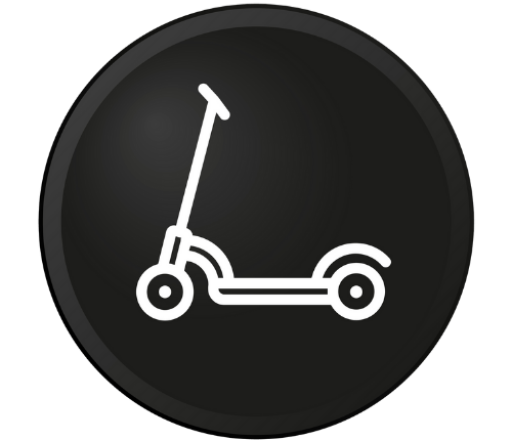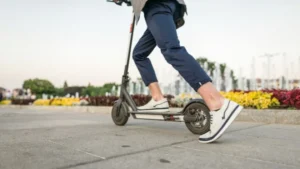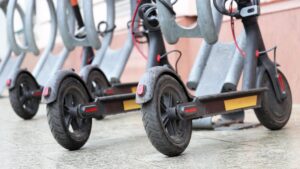Folding bicycles offer unmatched convenience and portability, making them a popular choice for urban commuters, travelers, and casual riders.
However, like all bicycles, ensuring safety while riding a folding bike is crucial. From proper maintenance and riding techniques to understanding traffic rules and using the right gear, this guide provides comprehensive safety tips to help you enjoy a secure and pleasant ride on your folding bicycle.
Pre-Ride Safety Checks
1. Inspect the Folding Mechanism
Description: Before each ride, ensure that the folding mechanism is securely locked in place.
Tips:
- Double-Check Locks: Ensure all folding joints and locking mechanisms are properly engaged and secured.
- Look for Wear and Tear: Regularly inspect the hinges and locks for any signs of damage or wear that could compromise safety.
2. Tire Pressure and Condition
Description: Properly inflated tires are essential for a smooth and safe ride.
Tips:
- Check Tire Pressure: Use a pressure gauge to check that the tires are inflated to the manufacturer’s recommended PSI.
- Inspect Tread and Sidewalls: Look for any cuts, punctures, or worn-out tread that might affect grip and stability.
3. Brake Functionality
Description: Effective brakes are critical for stopping safely.
Tips:
- Test Brakes: Squeeze the brake levers to ensure they engage fully and smoothly.
- Check Brake Pads: Inspect the brake pads for wear and replace them if they are thin or uneven.
4. Secure Accessories
Description: Loose accessories can become hazards during a ride.
Tips:
- Check Attachments: Ensure that any accessories, such as lights, bells, and baskets, are securely fastened.
- Avoid Overloading: Do not overload the bike with heavy accessories that could affect balance and control.
Riding Safely
1. Wear a Helmet
Description: A helmet is your first line of defense against head injuries.
Tips:
- Choose the Right Helmet: Ensure your helmet fits properly and meets safety standards.
- Secure the Strap: Always buckle the helmet strap securely under your chin.
2. Use Lights and Reflectors
Description: Visibility is crucial, especially in low-light conditions.
Tips:
- Front and Rear Lights: Use a white light on the front and a red light on the rear of your bike.
- Reflective Gear: Wear reflective clothing and attach reflectors to your bike to enhance visibility.
3. Follow Traffic Rules
Description: Adhering to traffic laws ensures your safety and the safety of others.
Tips:
- Ride with Traffic: Always ride in the same direction as traffic, not against it.
- Obey Signals: Stop at red lights and stop signs, and follow all traffic signals and signs.
- Use Hand Signals: Clearly signal your intentions to turn or stop to inform other road users of your actions.
4. Stay Alert
Description: Being aware of your surroundings helps prevent accidents.
Tips:
- Avoid Distractions: Do not use headphones or mobile devices while riding.
- Watch for Hazards: Keep an eye out for potholes, debris, pedestrians, and other potential obstacles.
Safe Riding Techniques
1. Maintain a Safe Speed
Description: Controlling your speed is key to reacting effectively to unexpected situations.
Tips:
- Adapt to Conditions: Slow down in wet or slippery conditions and in areas with heavy traffic or pedestrians.
- Brake Gradually: Avoid sudden braking to maintain control of your bike.
2. Use Both Hands
Description: Maintaining a firm grip on the handlebars ensures better control.
Tips:
- Keep Hands Ready: Always keep both hands on the handlebars, except when signaling.
- Use a Comfortable Grip: Choose handlebar grips that are comfortable and provide good control.
3. Position Yourself Safely
Description: Your position on the road affects your visibility and safety.
Tips:
- Ride Predictably: Avoid weaving in and out of traffic. Maintain a steady line.
- Stay Visible: Position yourself where you can be easily seen by drivers, avoiding blind spots.
Regular Maintenance
1. Lubricate Moving Parts
Description: Proper lubrication keeps your bike’s moving parts functioning smoothly.
Tips:
- Chain and Gears: Regularly lubricate the chain and gears to prevent rust and ensure smooth shifting.
- Folding Mechanism: Lubricate the hinges and locks of the folding mechanism to maintain ease of use and longevity.
2. Regularly Tighten Bolts and Screws
Description: Loose components can lead to accidents.
Tips:
- Routine Checks: Periodically check and tighten all bolts and screws, especially around the folding mechanism and handlebars.
- Use Proper Tools: Ensure you have the right tools to perform maintenance tasks and carry a multi-tool for on-the-go adjustments.
Conclusion
Safety should always be a top priority when riding a folding bicycle. By performing pre-ride checks, following traffic rules, using the right gear, and maintaining your bike regularly, you can enjoy a safe and secure ride.
Whether you’re commuting to work, exploring your city, or simply enjoying a leisurely ride, these safety tips will help you stay protected and confident on your folding bicycle. Happy and safe riding!



